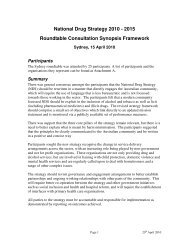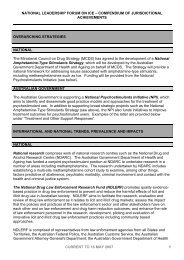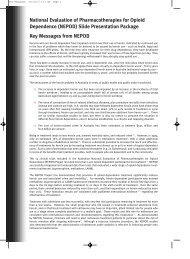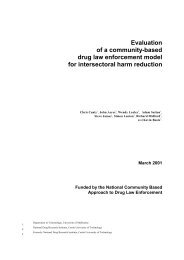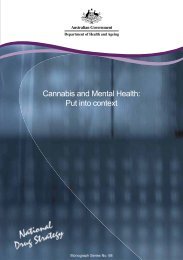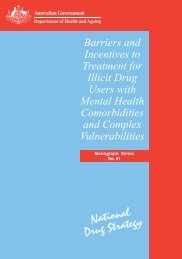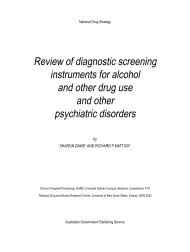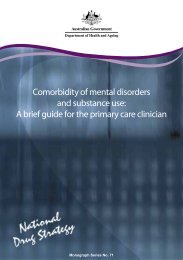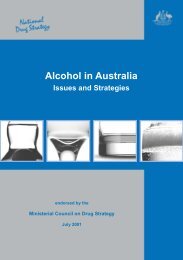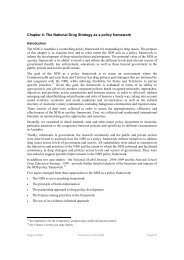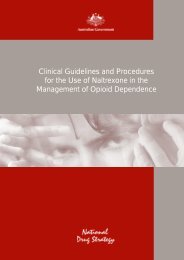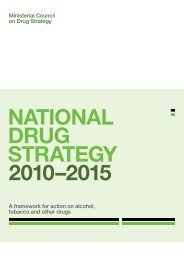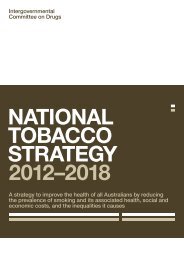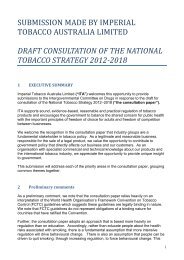A Guide for Frontline Workers - National Drug Strategy
A Guide for Frontline Workers - National Drug Strategy
A Guide for Frontline Workers - National Drug Strategy
You also want an ePaper? Increase the reach of your titles
YUMPU automatically turns print PDFs into web optimized ePapers that Google loves.
Abstinence-Based Treatment<br />
Abstinence-based options <strong>for</strong> treating opioid dependence include naltrexone<br />
treatment, therapeutic communities, self-help groups and counselling.<br />
Generally speaking, these treatments are <strong>for</strong> people who have withdrawn from<br />
heroin or other opioids, and want to be abstinent. However, some of these options,<br />
such as counselling and self-help, will also be useful <strong>for</strong> people who are being<br />
treated in methadone or buprenorphine substitution programs.<br />
Naltrexone treatment<br />
What is naltrexone<br />
Naltrexone is a drug prescribed on a long-term basis to help a person remain heroinfree<br />
after completing detox. It works by blocking the effects of heroin and other<br />
opioids <strong>for</strong> up to 72 hours (depending on the strength of the naltrexone dose).<br />
What does naltrexone treatment involve<br />
Treatment involves swallowing a tablet (usually 50mg) once a day, or every two or<br />
three days at a higher dose. The idea behind treatment with naltrexone is that if a<br />
person does not experience any effect when they use heroin, they will stop using.<br />
Issues to consider about naltrexone treatment<br />
A person must be completely detoxified from heroin be<strong>for</strong>e taking their first dose -<br />
otherwise it will bring on immediate, and possibly severe, withdrawal symptoms.<br />
Naltrexone is not a replacement <strong>for</strong> heroin - there are no pleasurable effects from<br />
taking it and it does not produce tolerance or physical dependence. Naltrexone is<br />
similar to Narcan®, a drug used to revive people from heroin and other opioid<br />
overdose, except naltrexone is longer acting.<br />
In general, not very many opioid dependent people enter naltrexone treatment and<br />
among those who do, drop-out rates are high. Long lasting naltrexone implants, which<br />
are inserted under the skin, are being trialled in some clinics, to see if they can help<br />
people stay in treatment. However, implants are not registered <strong>for</strong> use in Australia and<br />
should be considered experimental until further research has been conducted.<br />
Naltrexone is only available on prescription, under the trade name Revia®. Although<br />
any medical practitioner can prescribe naltrexone, it is recommended that people<br />
find one who is experienced in treating drug and alcohol dependence. It is important<br />
that the medical practitioner chosen can offer a thorough assessment and link<br />
people up with counselling and other support services, as people who are well<br />
supported seem to do better.<br />
14



